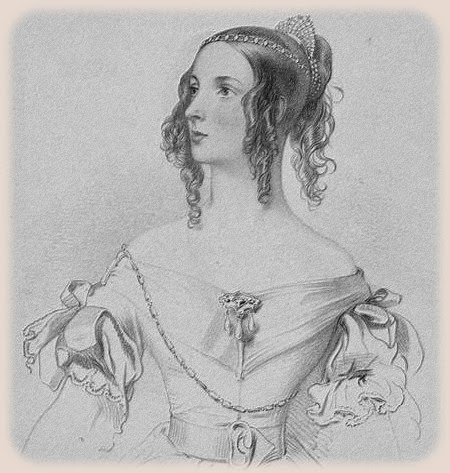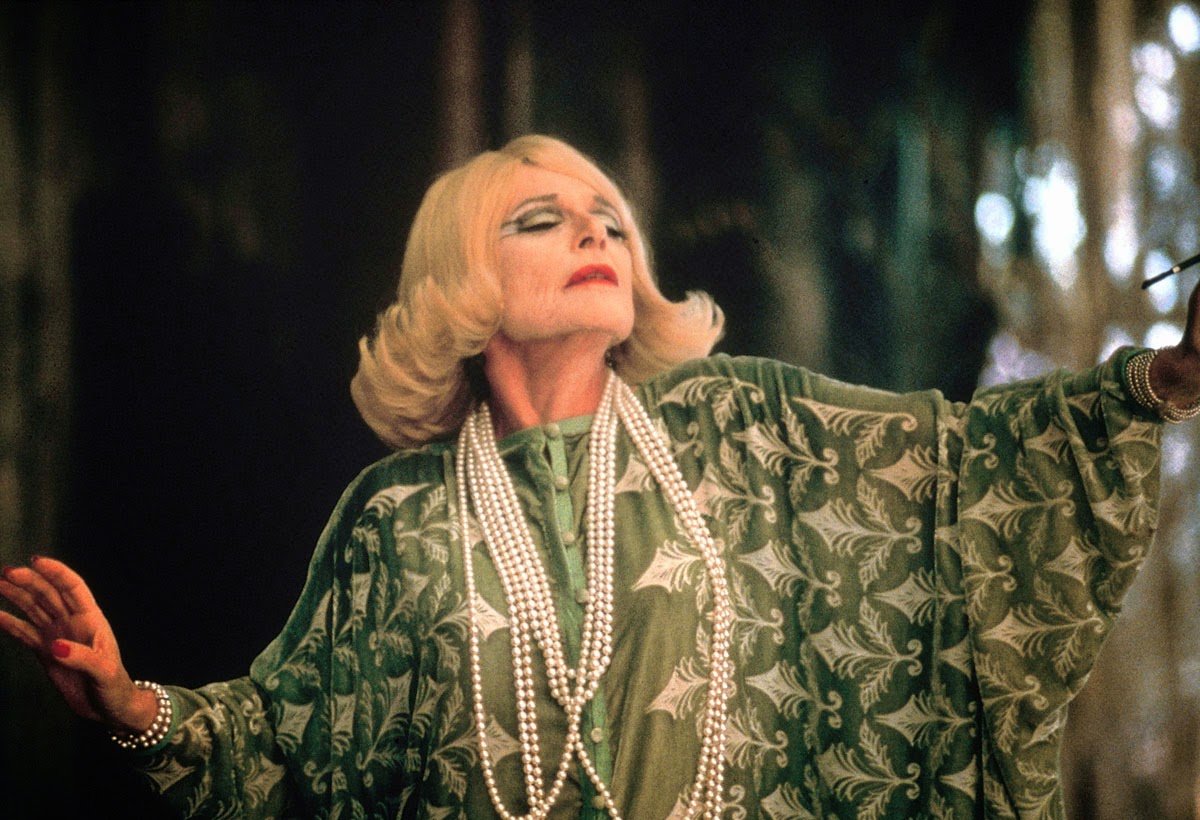A brief synopsis of the book
Great Expectations is a novel by Charles Dickens following the protagonist Pip as he grows up as the son of a blacksmith growing into a London City gentleman with the help of an unknown benefactor and Miss Havisham, An emotionally destroyed woman who is heart broken after her fiance didn't show up to their wedding. Miss Havisham introduces Pip to her foster daughter Estella and they fall in love. The story follows Pip as he tries to win over cold hearted Estella and discover the identity of his benefactor.
Miss Havisham according to the novel
Miss Havisham is described in the book as;
'..a skeleton in the ashes of a rich dress, that had been dug out of a vault under the church pavement.'
After being left at the altar Miss Havisham decides to spend the rest of her life locked away from the world in her house. She's stuck in time, still wearing her wedding dress.
'I saw that everything within my view which ought to be white, had been white long ago, and had lost its lustre, and was faded and yellow. I saw that the bride within the bridal dress had withered like the dress, and like the flowers, and had no brightness left but that brightness of her sunken eyes. I saw that the dress had been put upon the rounded figure of a young women, and that the figure upon which it now loose, had shrunk to skin and bone.'
'..her watch had stopped at twenty minutes to nine..'
'..I felt as if the stopping of the clocks had stopped Time in that mysterious place, and, while I and everything else outside it grew older, it stood still. Daylight never entered the house..'
'"The marriage day was fixed, the wedding dresses were bought, the wedding tour was planned out, the wedding guests were invited. The day came, but not the bridegroom. He wrote a letter -"
"Which she received," I struck in, "when she was dressing for her marriage? At twenty minutes to nine?"..
.."she has never since looked upon the light of day."
Dickens, C. and Bartlett, N. (2007) Great Expectations. United Kingdom: Theatre Communications Group.
Portrayals of Miss Havisham
Florence Reed 1934
Walker, S. (1934) Great Expectations.
This 1934 film directed by Stuart Walker had Florence Reed depict the character of Miss Havisham. I don't find this film to be historically accurate according to the visual styling of the character. Jack P Pierce was the makeup artist on this film. As can be seen in the picture above Estella's makeup reflects the late 20's early 30's rather than the minimal cosmetics used in the 1800's. Miss Havisham would have a hairstyle from the 1790's- early 1800's however in this film the hair is not reflective of this.
Martita Hunt 1946
Correspondent, L. C., Education (2010) ‘Return to real lessons: Dickens and key dates in history to be taught to raise standards’, News, 2 July. Available at: http://www.dailymail.co.uk/news/article-1291188/Modern-students-poor-grasp-history-depressing-says-Schools-minister.html (Accessed: 24 January 2015).
Directed by David Lean this 1946 interpretation of Miss Havisham was portrayed by Martita Hunt. Roger Ebert the notorious film critic later wrote in 1999 that she "dominated the films early scenes, playing Miss Havisham as a beak-nosed, shabby figure, bedecked in crumbling lace and linen, not undernourished despite her long excile."
Margaret Leighton 1974
Correspondent, L. C., Education (2010) ‘Return to real lessons: Dickens and key dates in history to be taught to raise standards’, News, 2 July. Available at: http://www.dailymail.co.uk/news/article-1291188/Modern-students-poor-grasp-history-depressing-says-Schools-minister.html (Accessed: 24 January 2015).
Directed by Joseph Hardy 1974 TV film shows Margaret Leighton portray Miss Havisham. Theatrical ageing using makeup is visible in this character. Although this productions criticism was mainly negative McFarlane expressed some admiration for Margaret Leighton's interpretation of the jilted Miss Havisham.
Joan Hickson 1981
Correspondent, L. C., Education (2010) ‘Return to real lessons: Dickens and key dates in history to be taught to raise standards’, News, 2 July. Available at: http://www.dailymail.co.uk/news/article-1291188/Modern-students-poor-grasp-history-depressing-says-Schools-minister.html (Accessed: 24 January 2015).
In 1981 Joan Hickson played Miss Havisham in this TV mini-series directed by Julian Amyes. Miss Havishams hairstyle in this series is one of the early Victorian era which would be historically correct. Gwen Arthy was the makeup and hair stylist on this film.
Jean Simmons 1989
Correspondent, L. C., Education (2010) ‘Return to real lessons: Dickens and key dates in history to be taught to raise standards’, News, 2 July. Available at: http://www.dailymail.co.uk/news/article-1291188/Modern-students-poor-grasp-history-depressing-says-Schools-minister.html (Accessed: 24 January 2015).
Jean Simmons who played Estella in the 1946 version of Great Expectations went on to play Miss Havisham 43 years later in this TV mini series. Eithne Fennel was the chief hairstylist and Eddie Knight was the key makeup artist on this production. "she is magnificent as Miss Havisham. she completely subsumes that vibrant personality of hers into the role of the bitter, vindictive old woman, to the point where I hardly would have recognised her....The lighting and camera angles and set are all artfully managed to add to her air of mystery and gloom, and again give the film a bit of that Gothic Horror feel."-Patti (no date) Dickensblog. March 24, 2010. Available at: http://dickensblog.typepad.com/dickensblog/2010/03/great-expectations-1989-part-1.html (Accessed: 24 January 2015).
Anne Bancroft 1998
Correspondent, L. C., Education (2010) ‘Return to real lessons: Dickens and key dates in history to be taught to raise standards’, News, 2 July. Available at: http://www.dailymail.co.uk/news/article-1291188/Modern-students-poor-grasp-history-depressing-says-Schools-minister.html (Accessed: 24 January 2015).
In 1998 Alfonso Cuaron created a modernised interpretation of dickens novel set in New York. Anne Bancroft played Ms. Dinsmoor. Roger Ebert said "Anne Bancroft's performance is interesting: Despite the weird eye makeup and the cigarettes, despite the flamboyant clothing, she is human, and not without humour." This version of Miss Havisham is so different and unique from the others I felt I had to include it.
Gillian Rampling 1999
Correspondent, L. C., Education (2010) ‘Return to real lessons: Dickens and key dates in history to be taught to raise standards’, News, 2 July. Available at: http://www.dailymail.co.uk/news/article-1291188/Modern-students-poor-grasp-history-depressing-says-Schools-minister.html (Accessed: 24 January 2015).
In 1999 Gillian Rampling played Miss Havisham. Fran Needham was the makeup designer. Although Rampling is an acclaimed actress I just don't feel that the makeup department went in the right direction when designing this character. She does not look old enough or as if she is stuck in time.
Helena Bonham Carter 2012
Correspondent, L. C., Education (2010) ‘Return to real lessons: Dickens and key dates in history to be taught to raise standards’, News, 2 July. Available at: http://www.dailymail.co.uk/news/article-1291188/Modern-students-poor-grasp-history-depressing-says-Schools-minister.html (Accessed: 24 January 2015).
One of the most famous depictions of Miss Havisham was portrayed by Helena Bonham Carter in 2012. The hair and makeup in this film is reflective of the era in which it is set although Helena seems to be playing herself rather than the character of Miss Havisham. She plays it very similar to the rest of her roles.
Gillian Anderson 2011
Gillian Anderson, Great Expectations (no date). 2013-02-20T00:00:00Z. Available at: http://www.tvchoicemagazine.co.uk/interviewextra/gillian-anderson-great-expectations (Accessed: 24 January 2015).
Although not the latest adaptation I have put this film last in my listing because it is my favourite interpretation of Miss Havisham. Throughout the series Miss Havisham gets more and more decrepid. The curls which once framed her face fall out and her skin breaks due to malnutrition. I love the fact that Gillian gives Miss Havisham a nervous tick, constantly picking at the skin on the back of her hand to portray her social anxiety. One of my favourite aspects of the makeup designed by Kristin Chalmers are the lips. Miss Havishams lips are dry and flaking, they look soar. this could be due to dehydration or malnutrition which creates a back story for the character that she doesn't eat due to her heartbreak.






































